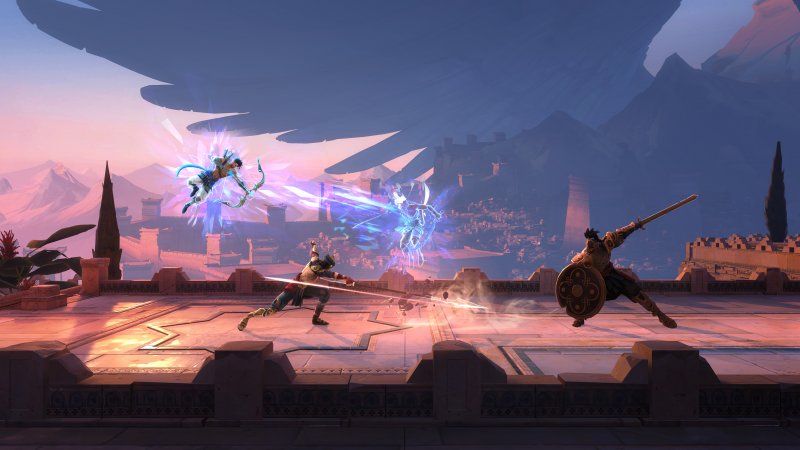The return of Prince of Persia in an “atypical” form is a success, and we hope it can inspire other productions of the genre.
In a market that seems increasingly crushed by the weight of mega-productions, at least as regards larger publishers focused above all on triple-A titles, medium-sized games often represent breaths of fresh air capable of having an impact really positive. Another example of this situation comes from Prince of Persia The Lost Crown, new chapter of the historic Ubisoft series which attempts to relaunch in an atypical direction but which is decidedly apt. It is an example that could be emblematic of this need to break the mold: the series had grown significantly in the PS3 and Xbox 360 generation, configuring itself according to the style of the classic third-person action adventure, a type of game that today should necessarily translate into a cinematic blockbuster-style production.
If at one time this approach could in fact also allow a good dose of experimentation, as the Sands of Time saga demonstrated, nowadays taking up such an approach could be risky due to the amount of investments it could require, because from games of this type the public expects jaw-breaking graphics and narration supported by intermission scenes of a certain level. Considering this, the choice made by Ubisoft was courageous but also intelligent: by completely modifying the structure and also returning to recover some original elements of the series, which in fact started as an action with 2D platform elements, the developers distanced themselves from need to set up a pachydermal production and they were also able to experiment with something new. That is, nothing new, mind you: the metroidvania is now super consolidated, but using it for this series is surprising.
Against the wear and tear of modern industry
The result is an excellent metroidvania that is receiving a notable reception from both critics and the public, based on the reactions to the demo available since yesterday. It is an effect similar to what we saw for Hi-Fi Rush a year ago and it is not even the first time that the French publisher obtains great results from initiatives of this kind: among perhaps the most beautiful titles in the Ubisoft catalog there are in fact games like Child of Light and Valiant Hearts, both emerged in a period in which the label was trying to experiment with new productions through “indie” style development typologies, even though they were still games coming from a real major label. Considering the trend of the industry and the well-known sustainability problems of maxi-productions, between exponentially increased budgets and very long development times, the use of these experiments could prove to be saving.
The same path has also been undertaken some time ago by EA with the Originals label, which has already brought “small” but very important titles such as the Hazelight games, with A Way Out and above all It Takes Two. In any case, it is above all a question of alternating, clearly not completely replacing major productions, but the diversification of experiences and production methods could be an answer to many current problems of the videogame industry. On the other hand, this is what has been said for some time now also regarding Game Pass and the possibility of investing and giving space in alternative productions to the standard triple-A ones, which has already given the opportunity to demonstrate notable results such as the aforementioned Hi -Fi Rush, Repentance and Grounded. However, it would not be a question of taking away space from true indies, but rather of rediscovering the intermediate territory of “AA” games, so to speak, which once represented an important portion of the productions of large videogame publishers.
This is an editorial written by a member of the editorial team and is not necessarily representative of the editorial line of Multiplayer.it.
#Prince #Persia #Lost #Crown #Smaller #games #big #publishers #great #idea

